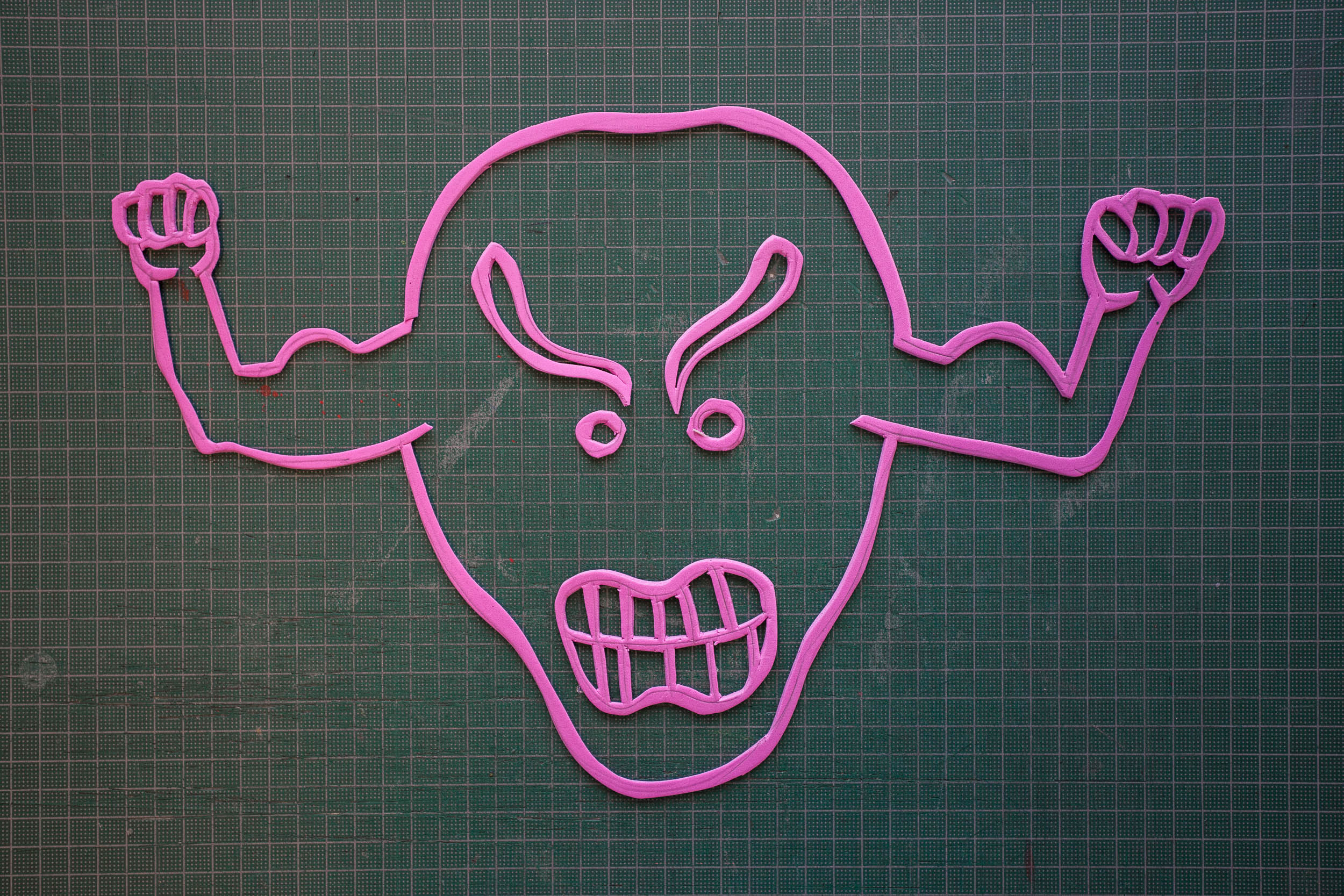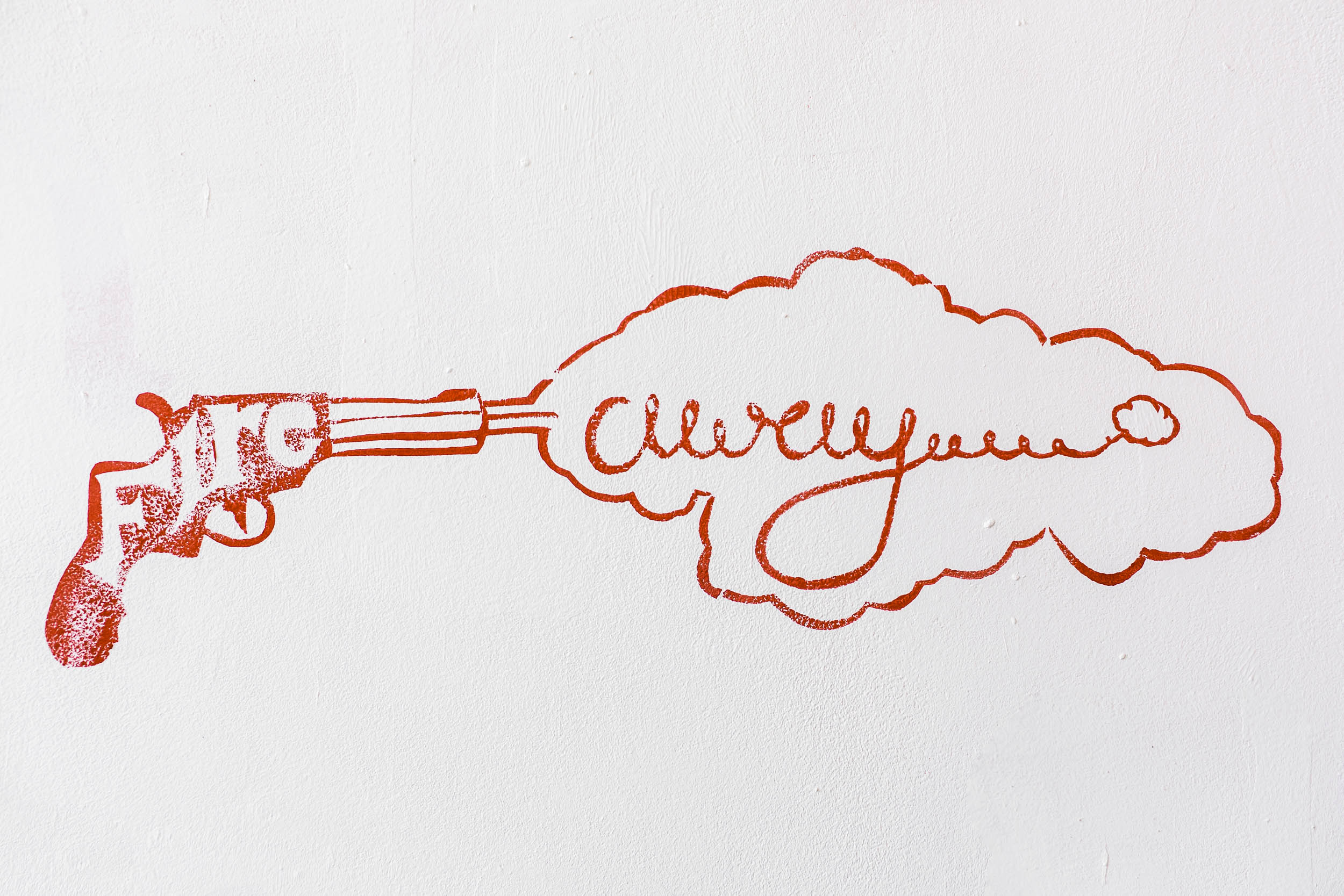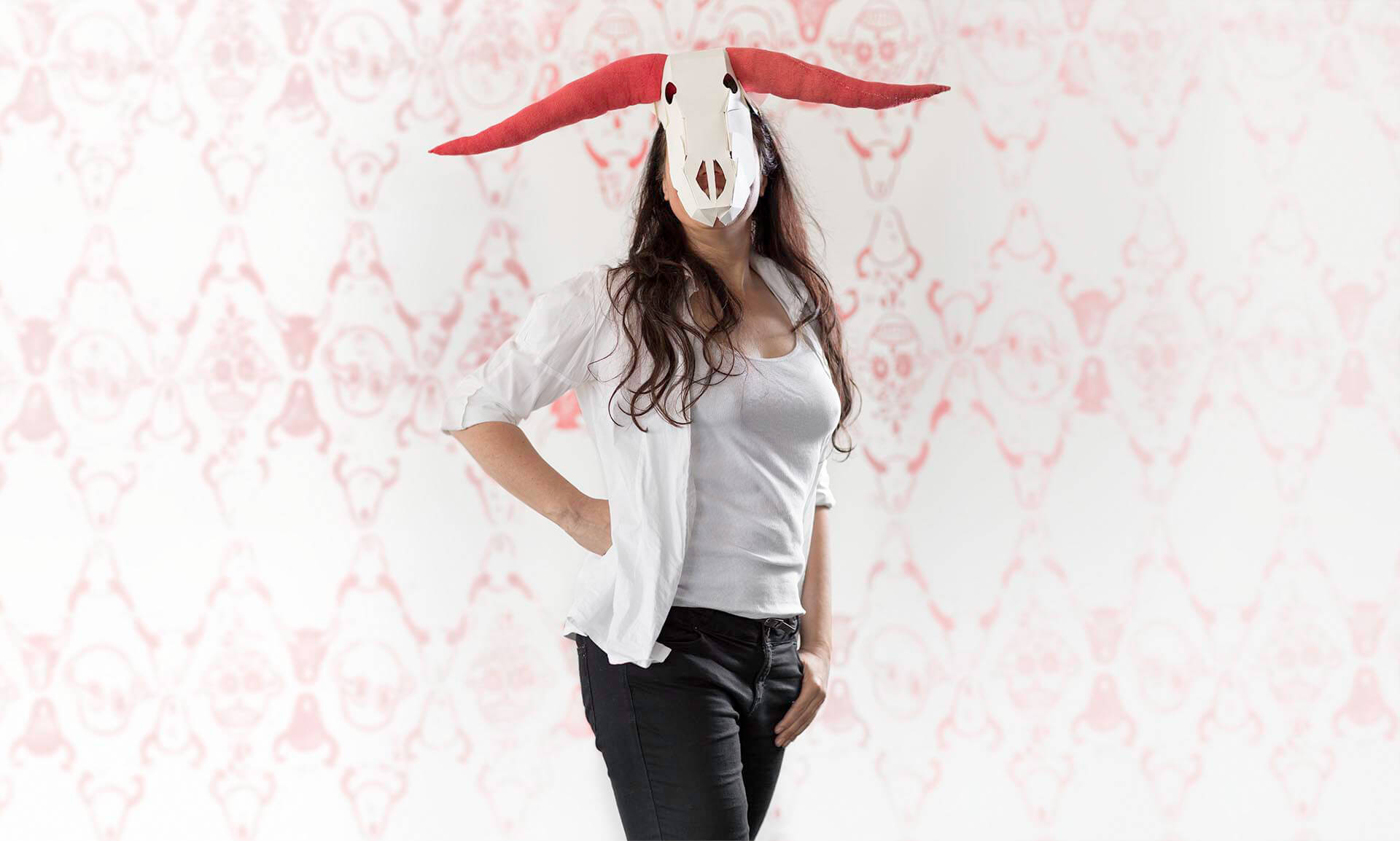Mithu Sanyal: What was the start of this project? (which premieres in June at the Leipzig Baumwollspinnerei under the name “Arts and Crafts Week at Panty Camp”)
Petra Mattheis: Years ago I had an idea for a title, “Dreams of my unfruitful ova”. This idea followed me for a long time and I could never really figure it out. I tried lots of different ideas, but I never had enough confidence in any of them.
Then in the summer of 2013 I had the idea to create a series of designs for t-shirts about menstruation. That’s where I started researching about menstruation and collecting texts and symbols.
Are the t-shirts for sale? Do you think people will wear t-shirts about menstruation?
Well, American Apparel got their menstruation t-shirt out the door first. Theirs had a drawing of a bleeding, masturbating vulva with pubes. The t-shirts weren’t so important to me after that. Perhaps it wasn’t so much about making t-shirts you could wear as it was about taking something that had been hidden and silenced for so long and making it visible.
Ads always try to emphasize that everything about menstruation should be invisible.
Petra Mattheis
The American Apparel t-shirt by Petra Collins caused controversy for a lot of people. Where do you think this sense of uneasiness around the taboo comes from?
She touched on a lot of taboos—masturbation, pubic hair, and menstruation. Advertising has a lot to do with keeping up the menstrual taboo. Ads always try to emphasize that everything about menstruation should be invisible. Advertisements tell me that I shouldn’t talk about it, that I should do everything I can so that no one notices anything, and that I should do extreme sports in all-white clothes like an energy bomb. This tells women that they should suppress, ignore, and try not to formulate their own wants or desires. I read something recently that summarized it very well: Women make hypocrisy a proper art form.
This taboo is also kept up through silence. Fortunately there are some people out there working for a change as menstrual activists. People (and this includes men, it’s not just women) just have to start talking about it.
Periods have been a taboo subject for centuries, where do you think that comes from?
It’s just a natural process, really. An essential one! The taboo is everpresent in all cultures and surely has something to do with patriarchy and the consequential oppression of women. Power structures that favor some and oppress others. Although our media and our films are full of blood and statistically we’re around menstruating women every day, it still isn’t common to talk about menstruation in a casual way.
When you think about how femininity was worshipped in the stone age, the female body, the vulva, menstrual blood, then it’s sad that the menstrual taboo is still a condition of present-day life. I have spoken with women whose partners refuse to buy tampons or empty the waste basket if there are used tampons inside. Is it about menstrual blood, is blood not just blood anymore? That was the starting point for my work.
Menstruation is a complex subject. So many things start from the center of a womans body, that I keep discovering new associations that I want to work on.
Petra Mattheis
What sort of things did you stumble across during your research?
The first thing to come up was the moon. Periods and the moon have presumably been bound together for millennia. I read that in times when moonlight still played a role, women would menstruate together at the new moon. Flowers are also a common symbol. The idea of growth and blooming I find particularly interesting. The snake is a “moon animal” because of its multiple skins.
Many designs came about due to formal resemblance, for example the cow skull, which resembles a uterus and fallopian tubes with its horns. Later I learned that a bucranium is a very old symbol for female reproductive organs. I’m very proud of my creation of the uterus as a Mexican skull—here the fallopian tubes are eyes.
Menstruation is a complex subject. So many things start from the center of a womans body, that I keep discovering new associations that I want to work on.
I also spent lots of time with period euphemisms. The British “The Curse”, the German “Strawberry Week”, the American “Shark Week”. There’s a large cultural and regional variety of expressions. Some are very creative and expressive in their description. I used one of them as the title of my exhibition: “Arts and Crafts Week at Panty Camp”.
What will people see in the exhibition?
Lots of red! That was something I decided right from the start, to use red for everything. Part of the exhibit is the “Become a Menstruator” project, or BAM for short. That project is all about stamps with text and picture designs that came out of my research. The walls are stamped from top to bottom with the designs. “BAM” even has its own website: becomeamenstruator.org, a do-it-yourself-style website where you can print out do-it-yourself templates, create your own stamps, and get started in an activist way. I will show the originals in the exhibition.
There’s also the BAM-Manifesto: “28 Days to overcome menstrual taboo!”. There will also be a series of works with the title, “Die Träume meiner unbefruchteten Eizellen / Ode to my spotless ova”. Here my original text has finally found a form. This series consists of a group of differing figures made of old clothing I dyed red and sewed together. And then there’s more to see past that.
So the exhibition isn’t “only” intended for consumption, but also for participation, creation, and carrying further. How does that work?
I will install a corner where people can stage themselves as menstruators. These portraits will then be spread on social media with the subjects’ permission.
Inspired by Eve Ensler’s “Vagina Monologues,” I also started to ask women that their womb’s face looked like. I got moving answers, like “disappointed”, “sad”, and “like a fighter”. Visitors to the exhibition will have the chance to give a face to their (real or possible) uterus. In “Who’s Your Womb?” you can stamp faces on pre-printed womb shapes (which look similar to faces). The various face prints can be assembled from a variety of eye shapes, eyebrows, noses, and mouths.
Your project is a wonderful mixture of art and activism. What do you hope to achieve with it?
Definitely a more conscious relationship with menstruation and everything that comes from it. It’s something that is right in the middle of all woman and is associated with so many negative things. I want people to be open and relaxed about it. It would be great if the exhibit could go on tour and meet different cultures. It’s such an important part of female life that can be fun—it can be such a source of joy and pleasure! I know from experience how the taboo can dissolve. It takes time, of course, that stereotypes can always be broken. We can put a new stamp on menstruation, literally!
Mithu Sanyal is the author of the book „Vulva - Unveiling the invisible sex”.






